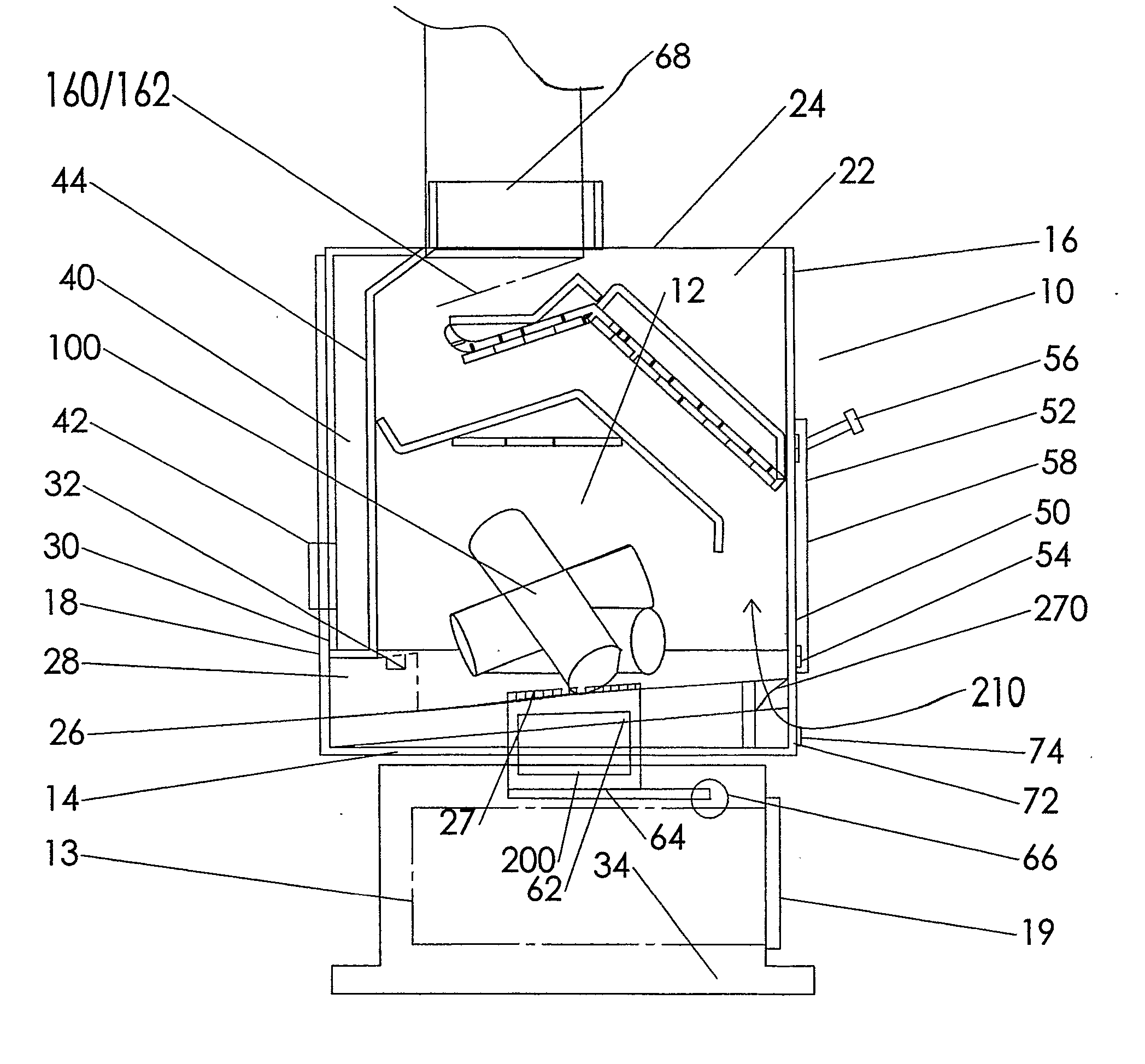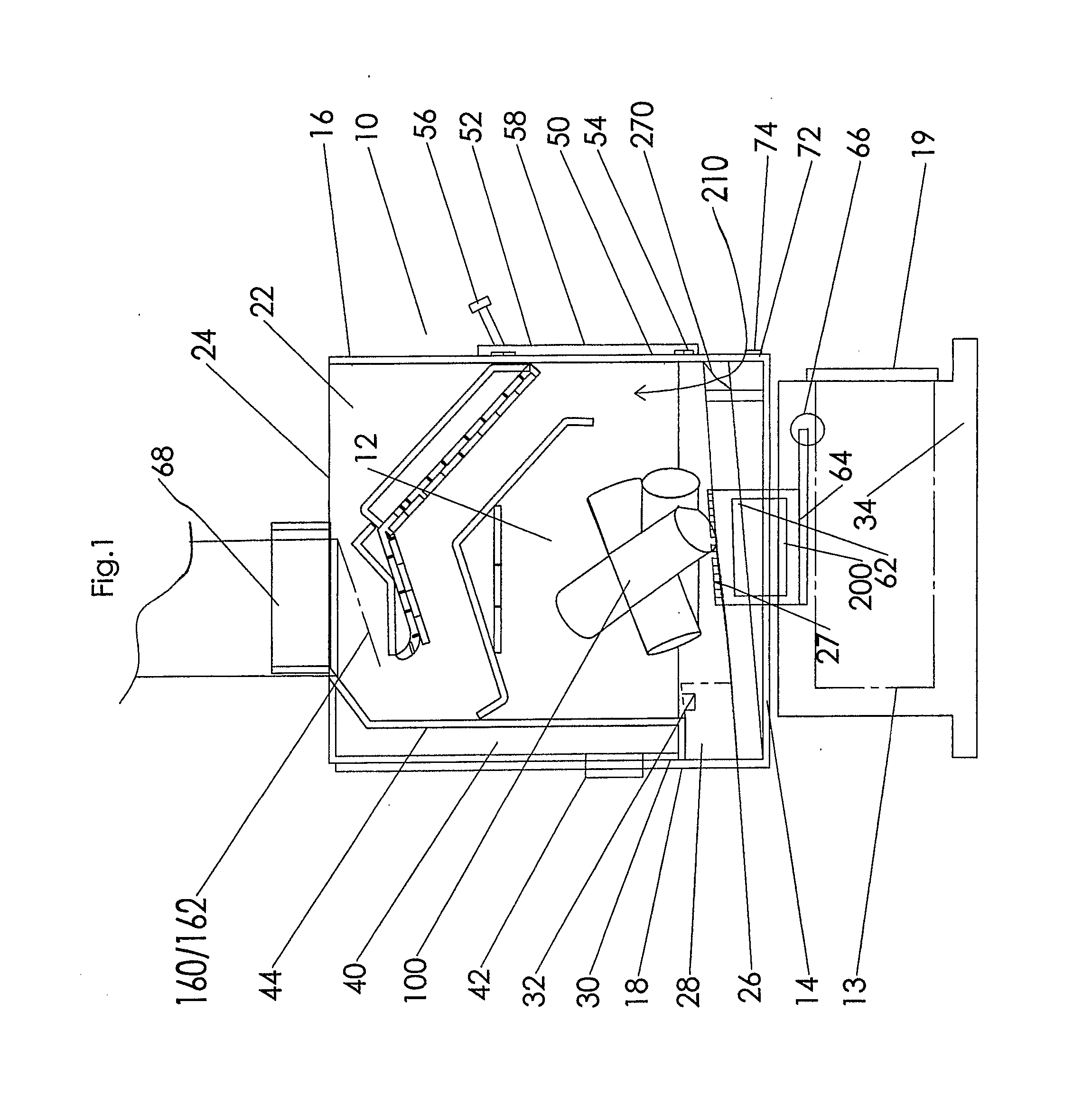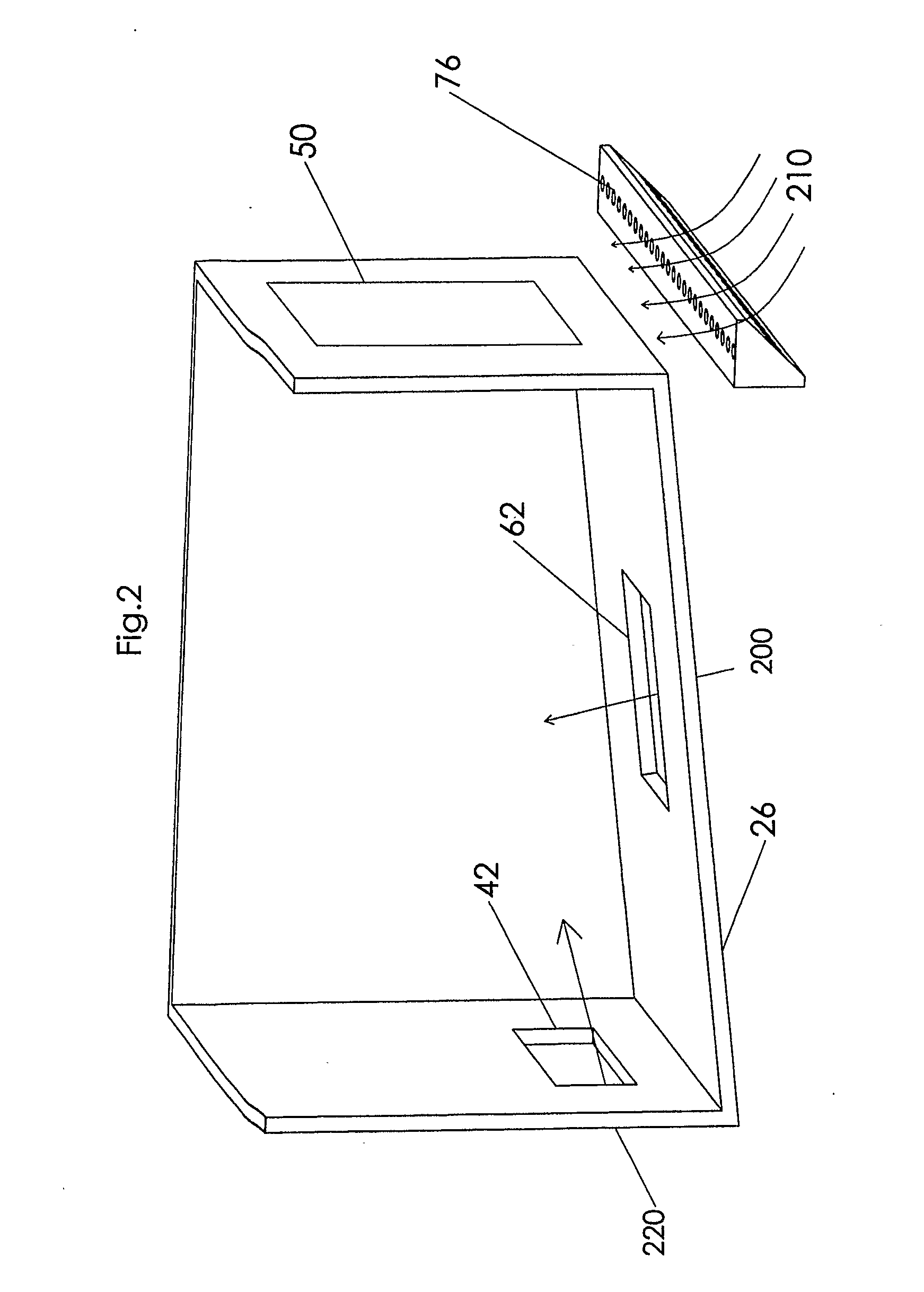Combustion Apparatus for Solid Fuel
a technology of combustion apparatus and solid fuel, which is applied in the direction of lighting and heating apparatus, domestic stoves or ranges, heating types, etc., can solve the problems of consumable devices, wear and tear of coatings that act as catalysts, and inefficient conventional solid fuel burning apparatus, etc., to reduce emissions and shorten the effect of venting structure and alternative rou
- Summary
- Abstract
- Description
- Claims
- Application Information
AI Technical Summary
Benefits of technology
Problems solved by technology
Method used
Image
Examples
Embodiment Construction
[0032] Referring to FIG. 1, the preferred embodiment of the invention, a natural draft secondary combustion apparatus 10 is shown in perspective. The combustion apparatus 10 includes a firebox 12, which is generally cube or box shaped and comprised of six planar panels, each having four edges contiguous with the edges of four other panels. The panels, specifically a bottom 14, front wall 16, back wall 18, left wall 20, right wall 22 and top wall 24 form the firebox 12. The front wall 16, left wall 20, right wall 22 and back wall 18 extend vertically from the bottom 14 and are capped by the top wall 24. The left wall 20 and right wall 22 extend between the front wall 16 and back wall 18. The firebox 12 is supported by a pedestal / base 34. The pedestal / base 34 has a front opening door 19 provides access to an ash drawer 13. The firebox 12 preferably has a 127 mm (5″) round flue exit collar 68 situated in the back half region of top wall 24. The flue collar 68 may also be 15 mm or 6″ in...
PUM
 Login to View More
Login to View More Abstract
Description
Claims
Application Information
 Login to View More
Login to View More - R&D
- Intellectual Property
- Life Sciences
- Materials
- Tech Scout
- Unparalleled Data Quality
- Higher Quality Content
- 60% Fewer Hallucinations
Browse by: Latest US Patents, China's latest patents, Technical Efficacy Thesaurus, Application Domain, Technology Topic, Popular Technical Reports.
© 2025 PatSnap. All rights reserved.Legal|Privacy policy|Modern Slavery Act Transparency Statement|Sitemap|About US| Contact US: help@patsnap.com



